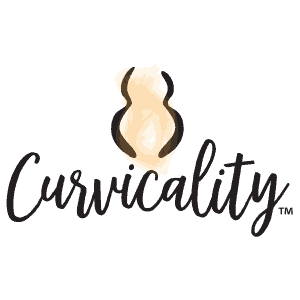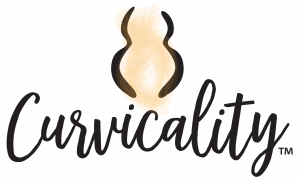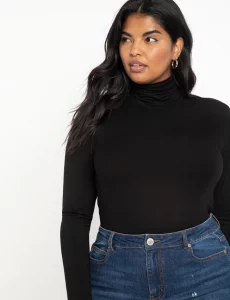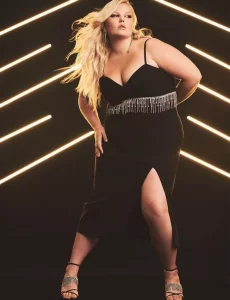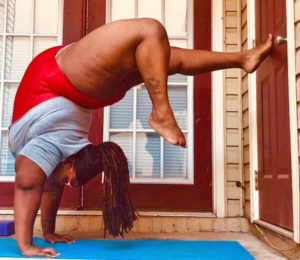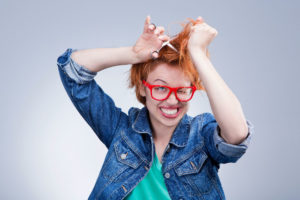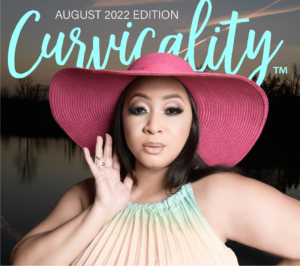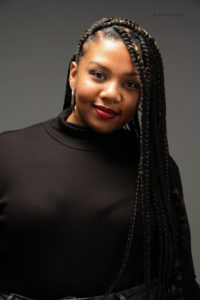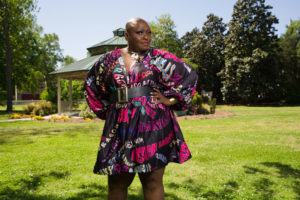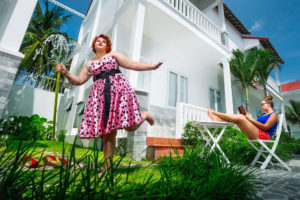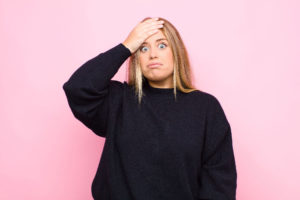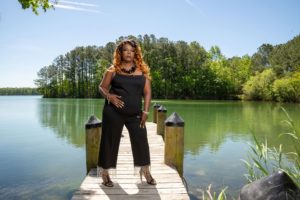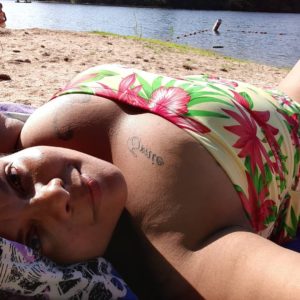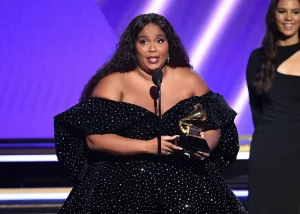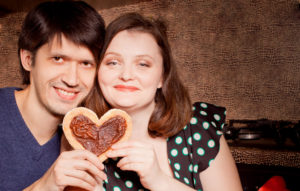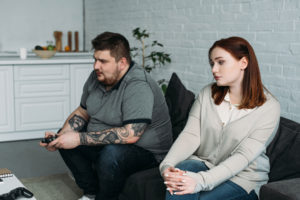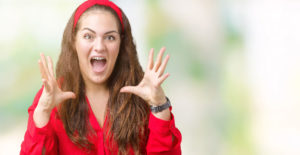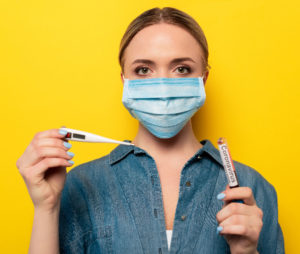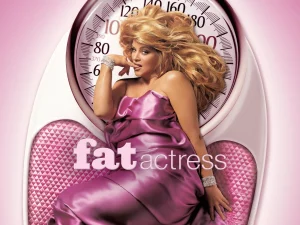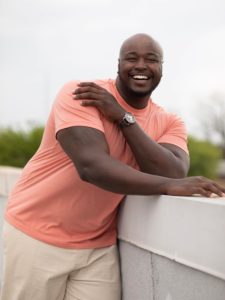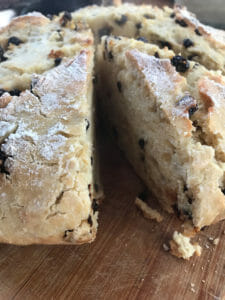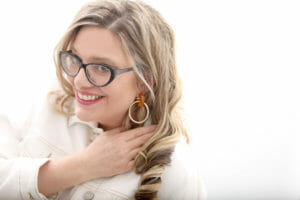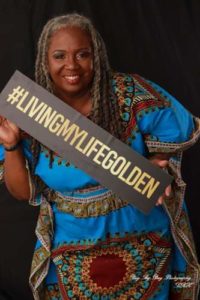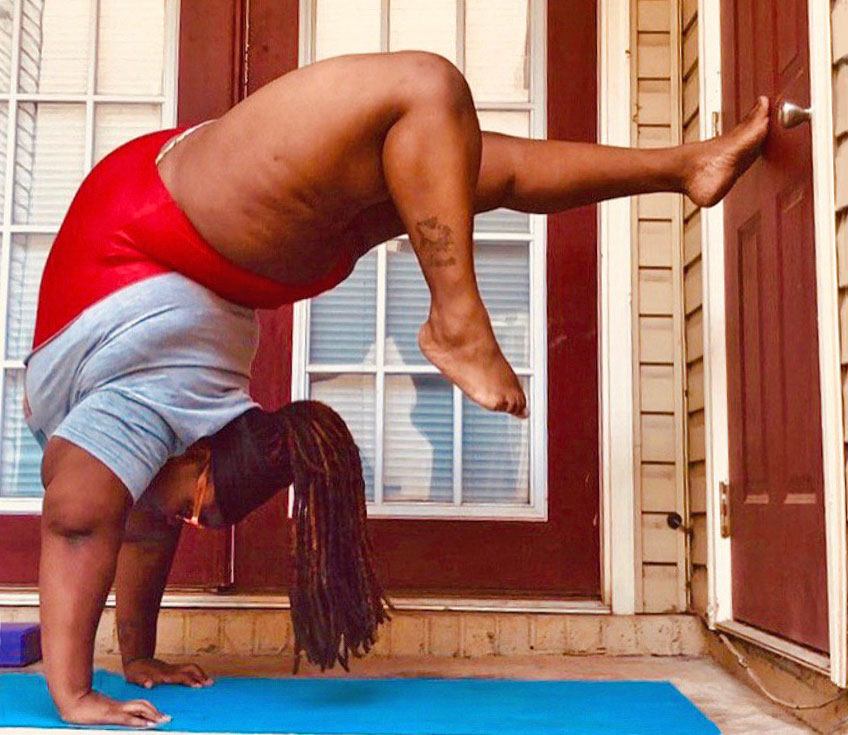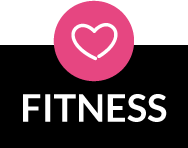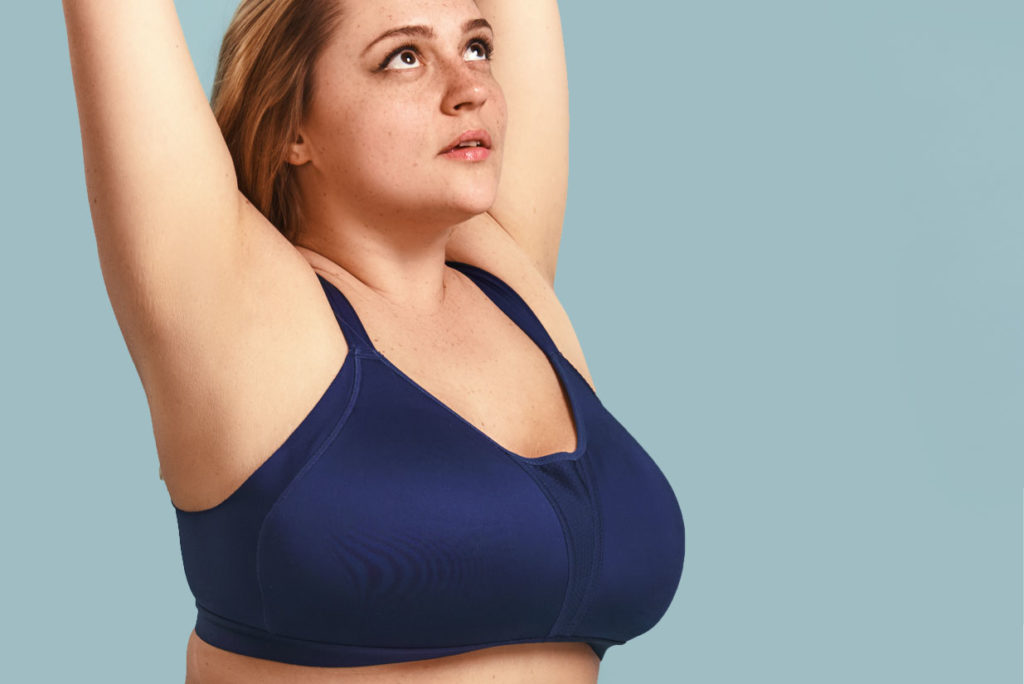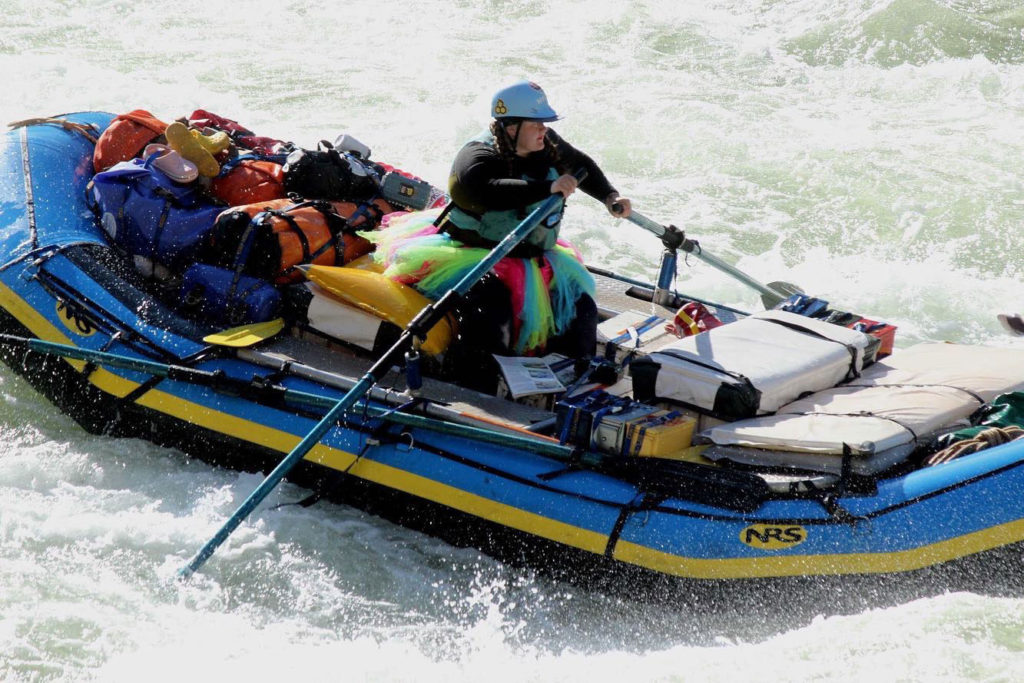Antoinette Webb didn’t know anybody who looked like her who did yoga. She didn’t have so much as a yoga mat when she started. But she persisted, and now she’s inspiring other plus-size women of color that yoga is for everyone.
A Role-Model Mom
“My mom always marched to the beat of her own drum. She has always been one for advancing into health. She’s always tried just about anything just to honestly find her niche. She was interested in Beach Body. She introduced me to belly dancing, just all kinds of stuff. One morning before she went to work, she told me about this really, really older white woman who was really, really flexible.” The woman led a yoga class on TV.
Webb, about 11 then, had to ask her mom what yoga was.
“I was floored at everything. I felt like a fish out of water just from looking at her and what she was doing.” She guessed it would take her 40 years to learn to do the movements the older woman was doing with such ease. “This movement is awesome but I don’t know if I’m going to be able to do this,” she says she remembers thinking.
At the same time, Webb, who describes herself as having been “chunky” as a child, assumed she might need to be as skinny as that instructor was. Her mother advised her to lose some weight and give it a try.
But yoga didn’t seem to be culturally relevant to her, and she didn’t keep it up. Still, yoga remained in the back of her mind through the years.
“As I got older, I was still active and doing dance. My mind would still go back to a flowy kind of release. I have a history of doing liturgical dance — dancing at church. It kind of had some of those aspects.” Liturgical dance and yoga share a spiritual side.
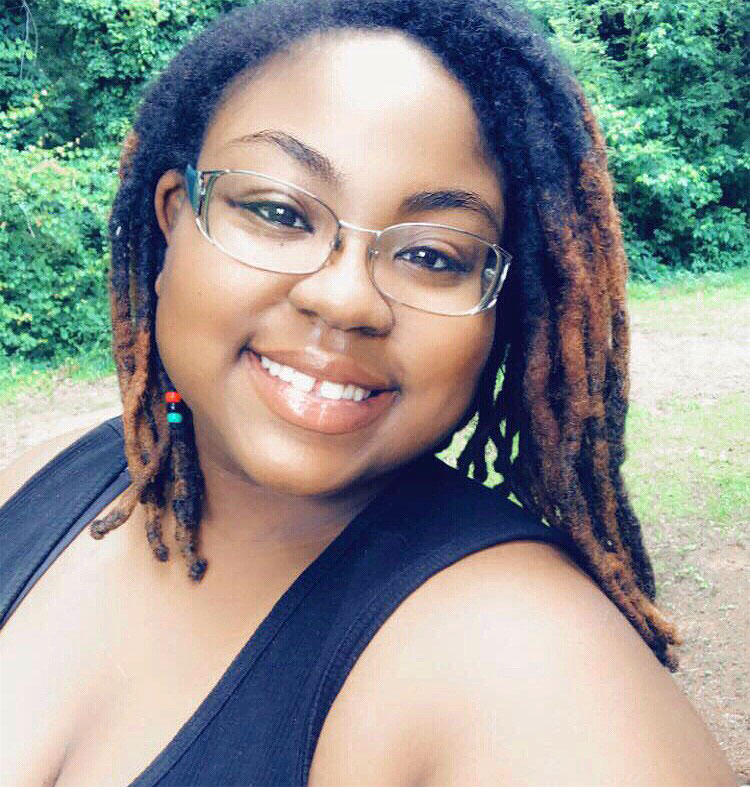
Instagram to the Rescue
Then came Instagram, and Webb was introduced to athleisure. She had given birth to her daughter, now aged 5, and felt like she needed to be more active. “What can I do that isn’t too much but is just enough for me?” she asked herself. Yoga came to mind.
“So I typed in a #yoga. And it was all skinny white people who had been doing it for 20 years. And then I saw a plus-size person. Wait a minute, there’s a person like me who’s a little bit flexible?”
That, Webb realized, meant she could do it, too. And then she kept searching hashtags. She kept searching for people who looked like her.
Black People Do Yoga!
“And then I saw #blackyoga. So I pressed the hashtag, and I see a couple of black yogis. And I said, ‘Oh, black people do yoga!’”
Her next question was, “OK, how can I put the two together?” She wanted to find more plus-size yogis and more black yogis. Maybe even some yoga practitioners who checked both boxes.
She found Dana Falsetti, @practicewithdana, a plus-size woman who offers donation-based yoga classes online. And then she found Jessamyn Stanley, @mynameisjessamyn. “She was black, queer, she was plus-size. And I was like, ‘Who is this badass? I need to follow her.’” She liked that Jessamyn is “very unapologetically black.”
“I try to always mention them, because they were important to me. Upon seeing the people who were plus-size who were practicing yoga, they were also talking about body love. I really teared up. Then was when I found some black yogis, people who looked like me.”
Body Love Game-Changer
“I’ve been on a journey to health, for a healthier me, I’d say honestly all my life.
When I was younger, the fat-shaming was extremely bad throughout my childhood.” Once she had a daughter, Webb wanted to find a way to keep her child from suffering that.
Hearing larger women talk about body love and taking care of their plus-size bodies resonated powerfully with Webb.
“I don’t want a quick fix. I want a long-lasting one. I want to love my body. Also, if I can inspire one person to get off the couch and try to touch their toes, I’m happy. And here we are, five years later.”
Five Years Later
When Webb says it’s been five years, she isn’t estimating.
Aug 1, 2015, was when she got serious with her yoga. She knows the precise date because of a yoga challenge that Kino MacGregor put out there.
She decided she would take that seven-day plank challenge, and she committed to sharing her posts during the challenge.
“I was nervous as all get-out. I saw not a soul who looked like me.” But she decided to do her best.
“That was it. The first pose was just a regular old plank. I was like, ‘Oh my gosh, this is hard! It’s so much! And all I’m doing is a plank. And being that I wasn’t in the best shape ever ….” But she had some old muscle memory from her dancing days she was able to build on. So she completed the challenge, and then she wanted to do more.
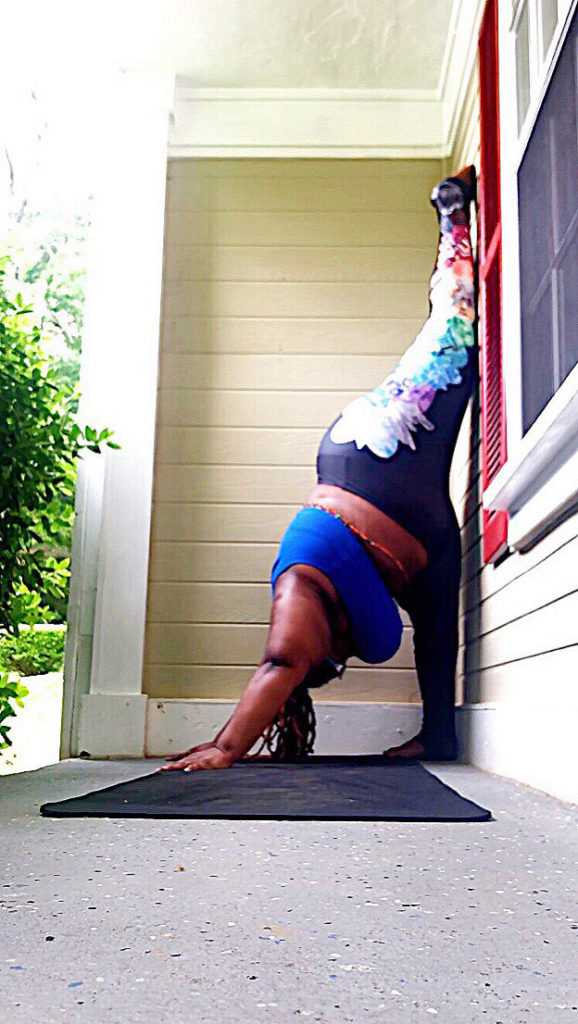
‘I Wanted To Stand On My Head’
“I wanted to learn to do splits again. I wanted to stand on my head. And I was like, ‘Yeah. I want to see if I’m strong enough to do that.’ To push past my fears of being upside down.”
None of it was fast or easy. “It took a few months,” she says, to stand on her head. “I literally took all the time I needed to do things safely.” She had been studying massage therapy, and a lot of the teaching on body safety related to yoga, she found.
No Equipment Necessary
“I didn’t have equipment but I did have walls.” So she used walls for training herself to stand upside down. She didn’t rush into anything. “I’m trying to learn to combat that thing that tells me to ‘just go go go.’ I started listening to that voice inside me.”
Her then-10-month-old daughter was crawling around looking at her as she worked toward her goals. She would put her feet on the wall and lift one leg. “I just kind of went piece by piece. I want to learn how to flow through things and listen to my body.”
Black Yoga Teacher Training
She plans to begin yoga instructor classes by the end of the year or next year.
“Right now, I’m only taking classes online,” she says. Prior to the pandemic, she traveled to a few different studios in her area, where there are “so many amazing yogis.”
She was happy to find classes locally that catered to black people. “All are welcome. But very black-centered,” she said. However, she has never been able to attend a plus-size yoga class in person.
Inclusive and welcoming classes are important, but can be hard to find.
“I had a terrible yoga experience right after I started yoga,” she says. “It was the complete opposite of what I’m talking about.” She and her sister went to a yoga class at a fitness center. “There was not a single person in that class who was remotely plus sized. We were the only two black people, and the only two plus-size people. It was almost like everybody stopped talking when we walked into the room.
“The instructor was extremely rude. The patrons, honestly, ignored our existence.” The instructor didn’t acknowledge them as newcomers to the class and seemed not to care at all.
She was able to follow along but it was her sister’s first experience with yoga. Webb helped her sister as much as she could, but the instructor ignored them.
“I’ve got maybe a month under my belt at this point. He (the instructor) just does not care. I just tell her, we need to leave. So in the middle of the class, we rolled up our mats, picked up our stuff and left.”
She cried afterward, feeling that as a black and plus-size woman, she did not belong. It was another year of working alone at home before she took another studio class.
“I had to find a class with people who look like me first.”
Props for Plus-Size Yoga
Webb figured out how to do yoga without owning so much as a yoga mat at first. But now, she realizes there are many props designed to help plus-size or disabled people do yoga.
“They have these yoga jellies that give you extra cushioning. There are yoga props designed for plus-size people or those with some kind of physical issue. Anybody, literally any body, can practice yoga.”
“When I started five years ago, I didn’t know you could use a chair for a prop,” she says. But she made it up as she went along, making do with whatever she had around the house.
“If you can breathe and you have a body, you can practice yoga,” she says — she’s even seen paraplegics do it. “Some of the most forgotten individuals in society can practice yoga. It’s just a matter of finding out what works for you. If you have a body and you are breathing, you can practice yoga.”
Beyond the ‘Token Black’ — Modeling for The Gap
“Our representation is so skewed, and we just have to fight so, so hard to be seen. I haven’t even spoken out about my situation yet, but last year I had an opportunity to work at a Gap photo shoot in San Francisco.” Her constant thought was, “I hope I’m not the token black.
“At the time I had long locks. I have tattoos. I hope I’m not your token black to say, ‘Hey, we’re inclusive. We have a token black and she’s fat.’
“Going to San Francisco was altogether scary for me. I didn’t want to be that token black person. I knew in my mind, if this experience was not what I wanted it to be, I was going to say something.”
To her relief, the experience of modeling Athleta for Gap was all she could have hoped for. “As soon as I came in, I was so relieved. I saw so many different kinds of people. I saw so many people who looked like me. My makeup artist, Whitney, was a black woman. She said it was her favorite company to work for.”
Gap found her via Instagram and emailed her. “They had an opportunity for me to be a yoga model. All I had to do was say yes. Everything was ‘I had never.’” She had never flown by herself, she had never been to San Francisco and she had never modeled. Because she and her fiance are both aspiring photographers, she was excited to see the process.
“Everybody was so nice, so supportive.” She was honest in admitting that she’d never done any professional modeling and everybody was supportive.
And at that shoot, she met Dana Falsetti, who was also modeling at the shoot. Dana is non-binary and uses the “they” pronoun.
“It was so awesome, because I told them (Dana) they were a major inspiration for me. I of course started crying. I told them that if they did not make themselves accessible online, I might not have been there. They were much more the person I thought they were than I had ever experienced online. They’re pro-people. They’re pro-humanity.”
Black Lives Matter
Antoinette’s interview took place soon after the world watched George Floyd’s murder. She is passionate about Black Lives Matter.
“When it comes to Black Lives Matter, in every aspect of life, we struggle. We struggle so, so much. Our color doesn’t change our daily life. It shouldn’t change our daily life. For some reason, between leaving our household and coming home, it’s an extreme difference, because some of us might not come home.
After the Gap photo shoot in California, where marijuana is legal, Webb had a scare.
“I had a moment. They were going to take me to the airport. When they began vaping marijuana, “I just started freaking out. They were like, ‘Breathe. We’re in California, so you know it’s legal.’”
But in Webb’s experience as a person of color, marijuana use is dangerous. “If marijuana is involved in any case, 10 times out of 10, we’re guilty. They just comforted me so much. I didn’t even have marijuana, they did. That was at the moment when I realized how quickly things can come up to remind me of how black I am.
“So when we talk about BLM, it’s all black people. When everything went completely up in arms with George Floyd and Breonna Taylor, I had to make a decision to speak up in my space. If no one else on my page out of these 19,000 at the time followers sees it anywhere else, they will at least see it on my page.
“I am also black. I have to live this life every day. I’m extremely sensitive to the energy. I don’t understand why we’re hated so much. And while I’m not trans, I always wonder why people hate them for what they are, when it has nothing to do with anybody outside their body.” Anyone who is LGBTQ or plus-size or black cannot get away from that energy, and it’s exhausting, she says.
“I can’t put my energy into enlightening individuals who choose to remain ignorant. I just don’t have the capacity to be an activist and I applaud all who are. I still come to my space and I still share with you all the struggle of being black in America every day. I still put a smile on my face. Please just hang onto those thoughts, because while you’re being encouraged and inspired by me, underneath all that I’m still black in America and I’m fighting for my life. Every day.”
She and her fiance arrange their lives every day to stay safe. “Probably since I first found out who Emmett Till was and who Rodney King was, there’s never been a day I’ve left my house” without considering her safety, she said.
“My fiance has been disrespected in so many ways.” She has enraging stories about the way police have interacted with him. Neither Webb nor her fiance have a police record, but that has not prevented problems. Now, Webb always drives because they’ve noticed she’s less likely to be pulled over than her black male fiance is. These are things they always think of every single time they leave the house.
“All this is extremely emotionally draining. It intersects with yoga. I’m not going to do the labor for you to get to the end result of what you think is next. People refuse to accept that it comes from just doing it. Mind you, all I do is practice yoga. At the end of the day, they’re a person trying to get from Point A to Point B. This person is literally existing in their own space in their own life.”
She has noticed certain influencers and companies suddenly jump on the BLM bandwagon and calls it “tokenism” and a “dirty marketing strategy.”
She also calls out the yoga influencers who “had the nerve to scream out ‘all lives matter,’ when that reactive response alone negates some of what the true meaning of yoga is.”
At Home With Webb
She and her fiance live outside Atlanta and have a 5-year-old daughter. Her partner “made space for me to be a stay-at-home mom.” Kindergarten is up in the air right now with the coronavirus going on. Her daughter has never been to a daycare or another program, and may not be able to start one this year.
“It’s kind of funny how the tables have turned,” she says with a laugh. People questioned her decision to stay home with her child, “but now everybody is going bananas because their child is with them 24/7, and we’re kind of like, we’re used to it.”
